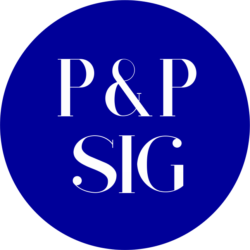This session was part of the Content Design and Delivery (CD) track and features Dr. Jennifer Goode from Mercer University. Dr. Goode self-describes as a teacher, project manager, instructional designer and trainer, organizational expert, and holds the STC’s CPTC Foundation-level certification.
The impetus for her crafting this presentation is her experiences interacting with researchers at her university while assisting them with presenting their research information in the form of research posters. Often producers and consumers of scientific information have different perceptions of the information presented, though the expectation of understanding might have been the same. With the method crafted by Dr. Goode and her colleagues, audiences from all backgrounds find the scientific information accessible and easier to interpret.
Dr. Goode provided three main takeaways for this session, presented to be tailored to the specific needs of one’s organization or academic setting with technical or scientific-minded colleagues. They are:
- Three communication forms to effectively disseminate scientific and research content to broad audiences
- Specific tools and resources used to create these communication forms
- Use a template that supports content creation and organization in each communication form
The three communication forms she notes work well with a variety of content producers and audiences are the research poster, the podcast, and the research project website. The research poster is a brief, pointed introduction to your research project, intended to be paired with an in-person conversation or presentation. The poster process that Dr. Goode notes follows Mike Morrison’s Poster 2.0 #betterposter method of design, notably to follow up on a quick five- or ten-minute conversation or presentation, Dr. Goode suggests placing QR codes on the poster or provide a business card that points your audience to an external source of detailed information, like a research project website.
While a poster presentation is designed to be a primarily visual interaction, the second form of communication Dr. Goode mentions, the podcast, is both an auditory and visual interaction. Podcasts can be listened to in the car, on a flight, or in the comfort of your home. Most importantly, podcasts offer a way to “build up” and “build out” your audience and community, while offering a way for others in your research community of interest to share their ideas.
The last communication form Dr. Goode mentions is the research project website. The benefit of using the research project website is the ability to provide a “home base” for all of the work related to a research project. While a conversation around a poster project might be brief and provide a “teaser” to the larger project, with a website, you can provide all of your publications, methodology of the research project, and also downloadable artifacts. But, most important, the website is a dynamic form of communication that can be frequently updated as your research project expands into different phases.
The tools for creating these various communication forms include:
- The typical printed sheet of poster paper
- QR codes
- business cards
- podcasts, published using any digital platform and posted to social media accounts, websites, etc.
- websites
Also, ensuring that each of these forms of communication follow a well-designed template is key for audience engagement and comprehension. For example, Dr. Goode mapped out a clear formula for designing research posters, a good format to follow for podcast episodes, and provided examples of well-received research project websites.
For additional information on Dr. Goode’s presentation, feel free to check out these resources:
Mike Morrison’s Poster 2.0 #betterposter
Mercer University’s Research that Reaches Out Podcast
– Shayla Corprew
